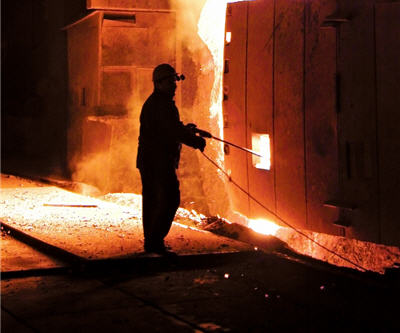
On Wednesday iron ore held onto its sharp gains of the day before with the benchmark import price of 62% fines at China’s Tianjin port steady at $116.60 a tonne and the 58% index rising to $107 a tonne.
However, the mini-rally did little to change the negative sentiment in the market which has seen prices slump since hitting a 2013 high of just below $160 in February.
And the world’s biggest consumers of the steelmaking raw material – Chinese steel mills – on Wednesday provided more for industry bears to sink their teeth into.
A looming supply glut, an economic slowdown in China with a new leadership bent on increasing the impact of market forces on its industries combined with chronic overcapacity and unprofitability among the country’s steelmakers have been cited as the main reason behind the iron ore price decline.
According to Reuters, at a Shanghai industry conference, the chairman of giant Baosteel Xu Lejiang sketched a bleak picture saying the slower than expected pace of China’s urbanisation drive and infrastructure build-out means steel consumption will weaken in the second and third quarter, “which will force mills to be more rational in their production plans. That means output growth will slow.”
China’s move away from total centralized control of the economy is designed to curb overinvestment in Chinese infrastructure – vide the many ghost cities and bridges to nowhere – and improve the country’s giant lumbering and inefficient state-owned enterprises.
He Wenbo, the chairman of Boasteel, China’s third largest mill, was even more pessimistic telling Businessweek that the new approach means the new government would not “carry out a significant stimulus policy”:
“The steel industry’s worst time is yet to come”. […] The company should prepare itself for five to 10 years in the future when market conditions are worse.”
Production at China’s blast furnaces continue to hover at near record levels of 2 million tonnes a day – April was the second busiest month on record.
But according to the China Iron and Steel Association, unsold steel held by traders grew by 10 million tonnes or 80% during the first quarter. At the same time steel prices have declined some 18% from February.
Last week Wang Xiaoqi, deputy chairman, of Cisa told Reuters: “I don’t expect trends to change in the next few months because capacity is too high and industry consolidation rates are too low. I predict steel prices are going to fall more deeply this year.”
In a research note last week, Standard Bank pointed out that the Chinese government’s new let-the-market-decide approach could lead to huge upheaval in the steel industry.
Under a new draft NDRC policy, the plan is to implement tighter operating parameters for mills (emissions and energy/resource use); and to “out” any of those failing to comply. Basically, this will force mills to shut down of their own accord and by their own means, rather than being “supported” to close by regional governments, as has occurred in the past.
RELATED: